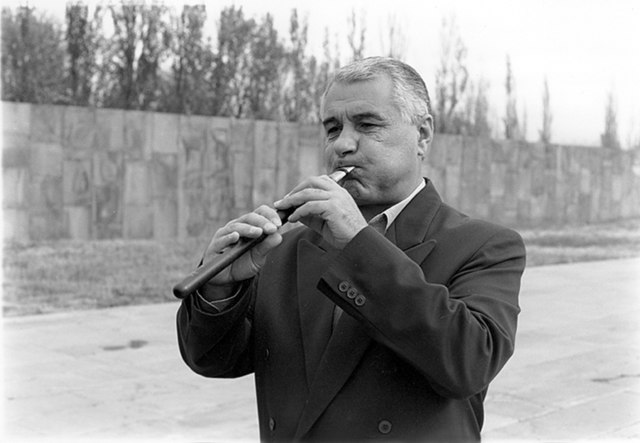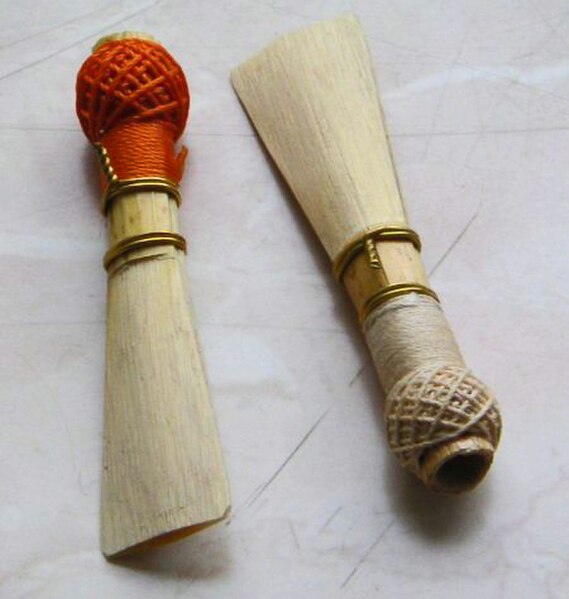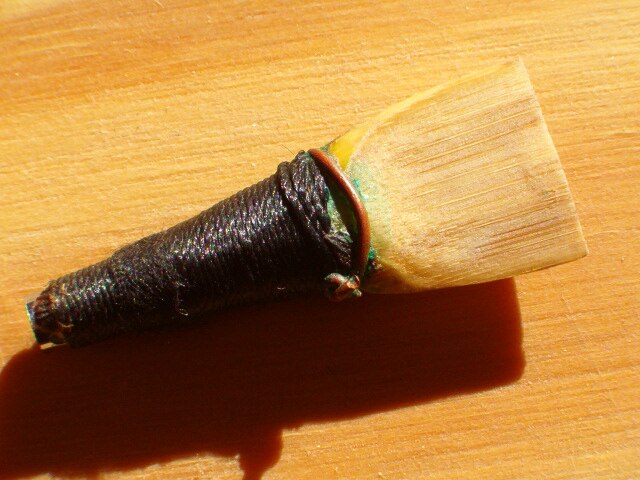The duduk or tsiranapogh, is a double reed woodwind instrument made of apricot wood originating from Armenia. Variations of the Armenian duduk appear throughout the Caucasus and the Middle East, including Bulgaria, Azerbaijan, Georgia, Kurdistan, Turkey, and Iran. Duduk, Kaval, Balaban, and Mey are almost identical, except for historical and geographical differences.
Armenian kids playing duduk
A duduk reed
Benik Ignatyan playing the duduk at the Armenian Genocide memorial complex in Yerevan, Armenia, 1997.
Duduk player at the Forom des langues du monde [fr] in Toulouse, France.
A double reed is a type of reed used to produce sound in various wind instruments. In contrast with a single reed instrument, where the instrument is played by channeling air against one piece of cane which vibrates against the mouthpiece and creates a sound, a double reed features two pieces of cane vibrating against each other. This means, for instruments with the double reed fully exposed, that the air flow can be controlled by the embouchure from the top, bottom and sides of the reed. The term double reeds can also refer collectively to the class of instruments which use double reeds.
Bassoon reeds, showing the oval opening (bottom left), which is actually a vesica piscis
Bagpipe of Portugal reed (gaita transmontana)
Bassoon reed
Bombard reed




![Duduk player at the Forom des langues du monde [fr] in Toulouse, France.](https://upload.wikimedia.org/wikipedia/commons/thumb/b/ba/Forom_des_langues_2013_18.jpg/450px-Forom_des_langues_2013_18.jpg)



